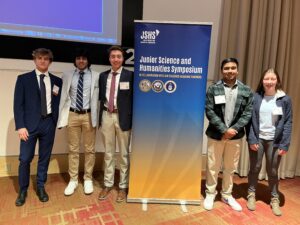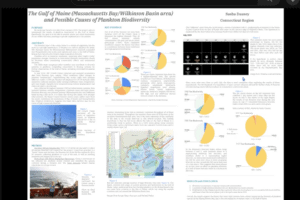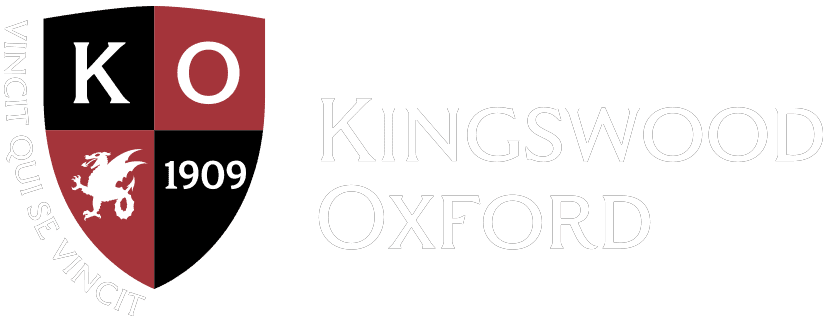April 02, 2024
Students Present Original Research at Science Symposium
Several of our Wyverns had the honor of being selected to present the results of their original research in STEM at the Juniors Science and Humanities Symposium (JSHS): Sasha Dausey ’25, Oskar Ruser ’24, Dhruv Suryadevara ’24, and Nicolas Tippner ’24. Aryan Dange attended as an observer. According to the JSHS website, the organization aims to “expose students to a diversity of thought and promote learning that can be applied to regular studies and real life.”

All of our Wyverns who participated in the event are committed to pursuing a career in medicine or sciences, and they have done significant research over the summer to be selected for JSHS. The students submitted an abstract to compete: Ruser worked in his father’s lab as a medical researcher in virology; Suryadevara worked at UConn Health with one of the faculty members regarding microbiology; Tippner attended the Yale program “Discovery to Cure” in the ob/gyn department; and Dausey used her Martin Nicolson stipend to study environmental science off the coast of Massachusetts.
As one of the higher-ranked researchers in the second category, Poster Competition, Ruser was selected to exhibit a poster presentation in person. Before the Symposium, a panel judged Ruser’s poster via Webex. At the Symposium, he gave a five-minute presentation and answered questions from the floor during one of the sessions. In the third category, STEM Posters, Dausey, Tippner, and Suryadevera presented a three-minute video “elevator pitch” explaining their poster presentations on Zoom, which were posted online and reviewed by scientists who posted questions and comments. Suryadevara left the symposium earlier as he was working a six-hour shift as an EMT ambulance squad in New Hartford, racking up over 500 service hours last summer!
Tippner’s research, “The Impact of Viral Infection on the Secretions of Tissue,” centered around the exposure of endometrial stromal cells to viral double-stranded RNA. His data showed that exposure to this double-stranded rna may impact the implantation. Implantation is when an embryo burrows deep into the lining of the uterus, where it can begin to grow. Implantation happens after fertilization, which is when sperm meets egg He noted that miscarriages before 20 weeks occur in one in five pregnancies and that infections may be the cause of 15% of those cases.
Last summer, Dausey spent two weeks on a research sailing vessel, the Corwith Cramer, collecting and compiling data for an oceanography course. She said the ocean’s surface is covered by neuston, a group of organisms found on top of or attached to the underside of the surface film of water. The Corwith was outfitted with neuston nets on the side of her ship and collected plankton within a 20-to-30-minute period. The goal is to predict where and when biodiversity occurs in this area by examining the data collected. She found that during or near a full moon, biodiversity was greatest in Massachusetts Bay, north of Cape Cod, and she determined that the location of high plankton biodiversity depended on ocean currents.
Peggy Clark, college counselor, who attended the event with the students, said, “The entire process from beginning to end involved a significant investment of time and effort, and we are very proud of these four students for their interest in participating in this opportunity. They found the day informative and took home important insights they will apply to similar future opportunities.”
